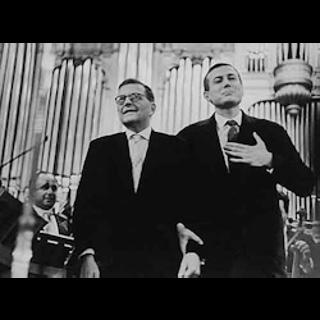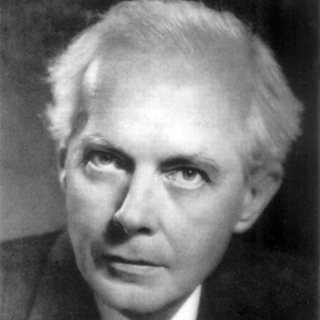
Bartok Violin Concerto No. 2
During Bartok's life, the violin concerto we now know as Violin Concerto No. 2 was simply known as Bartok's only violin concerto. The reason? His first concerto, written when he was a much younger man, had never been performed or published. This was a deeply painful memory for Bartok, who had written the concerto for a woman he was in love with, Stefi Geyer, but Geyer refused both Bartok's advances and the concerto itself, and so it remained unperformed and unpublished until after Bartok's death. Bartok had written other works for violin and orchestra, including a rhapsody written for his friend and recital partner Zoltan Szekely. Szekely continuously asked Bartok to write him a full blown concerto, but Bartok refused again and again, until finally in 1936 Bartok agreed. But even then, Bartok wasn't so easy to pin down. Bartok resisted the idea of a full scale concerto, saying to Szekely that he wanted to write a theme and variations for violin and orchestra, but Szekely refused, and demanded a 3 movement standard concerto. Bartok finally agreed, but as you'll see later, he found a way to get his theme and variations in anyway! The concerto took two years to write, partly due to Bartok being busy with some of his greatest large scale works, but also because of Bartok's acute stress due to the rise of fascism across Europe. He was constantly thinking of emigrating from his native Hungary, and finally in 1938 he left. As he wrote to his friend: "What is most appalling is the imminent danger that Hungary too will surrender to this system of robbers and murderers..." All of these competing impulses - Bartok's bitter memories of his first concerto, the turbulent political siutation, and his seeming lack of confidence in writing a full scale concerto, contributed to the delay, but finally in 1938 the piece was finished and was triumphantly premiered on April 24, 1939 in Amsterdam. This concerto is one of the greatest 20th century violin concertos, and is full of a massive amount of brilliant detail as well as an urgently emotional and passionate character. It is a gigantic, nearly 40 minute long piece, and its difficulties for both the violinist and the orchestra are immense. Today we'll talk about all of the ins and outs of this remarkable concerto, including its challenges, its beauties, its emotional scope, and its brilliant combination of tonality and 12 tone music. Join us! Recording: Danish Radio Symphony, Augustin Hadelich, Violin, Vasily Petrenko Cond.
13 Sep 202456min
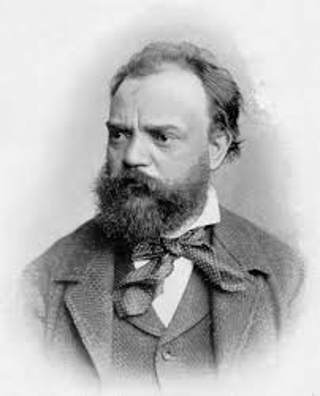
Dvorak Symphony No. 7
In December of 1884, Dvorak wrote to a friend about the composition of a new symphony: "I am now busy with this symphony for London, and wherever I go I can think of nothing else. God grant that this Czech music will move the world!!" He was in the midst of working on what would become his 7th symphony, and even though it is nowhere near as popular as his 9th symphony(The New World Symphony) or even the sunny 8th symphony, it is often thought of as Dvorak's greatest symphony, and for the record, I agree. This symphony is Dvorak at his most serious, most passionate, and most intense. Throughout the symphony, a kind of darkness pervades the work that is very unusual for Dvorak, though it also is full of so many of the things that make Dvorak's music so beloved today: gorgeous melodies as far as the eye can see, glorious orchestral writing, and more. But what it lacks, unlike the 8th symphony for example, is the kind of simplicity and naivete that marks much of Dvorak's music, and this lack of "innocence" has led scholars, musicians, and audience members to try to find an extra musical "meaning" for this music. Is the music an expression of Czech nationalism? Is it an expression of grief after the loss of his mother and eldest daughter? Was Dvorak trying to impress Brahms with his seriousness? What could have caused Dvorak to suddenly embrace such darkness in his music? Well, as we'll find out, it could be a combination of all of those reasons, but also it could be none of them at all. In the end, what is most important is the remarkable music that Dvorak wrote for this 7th symphony, and so today on the show we'll go through the symphony, trying to illuminate just what makes this, perhaps, Dvorak's greatest symphony. Join us!
29 Aug 202458min
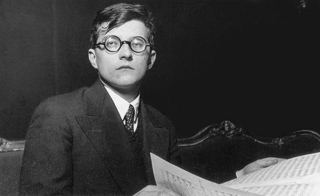
Shostakovich Symphony No. 4
Shostakovich's 4th symphony is not for the faint of heart. It is a massive work, around an hour in length, and it calls for the second largest orchestra of any in Shostakovich's output. It is uncompromising, sometimes brutal, and it isn't nearly as lyrical that later Shostakovich has in spades. But with all that said, many people, including myself, consider this symphony Shostakovich's symphonic masterpiece. It has been described as the symphony containing the kernels of everything Shostakovich would ever write after. It also marks the final piece Shostakovich wrote before his 1936 denunciation that utterly changed the course of his life. Today, on this Patreon-sponsored episode, I'll take you through this monumental work, telling you the remarkable story of the conception and aborted first performance of the symphony. Then we'll dive into the music itself, talking about the large scope of the piece, it's unusual form, and of course the raw emotional core that is always so present in Shostakovich. Join us for a wild ride!
15 Aug 20241h 8min
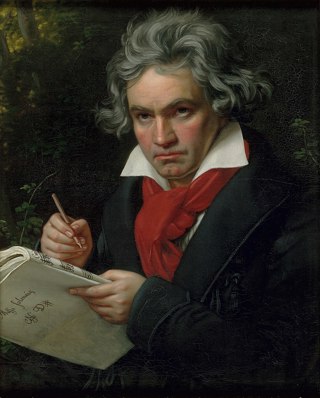
Beethoven Symphony No. 5
They are the most famous 8 notes in not only Western Music, but probably in all of music. If you walk down the street and ask someone to name a painting, they might say the Mona Lisa. A movie? Maybe Star Wars. A piece of classical music? Certainly, it would be Beethoven 5. But why? What makes those 8 notes so arrestingly powerful? Well, this week, we're going to take a deep look at this ubiquitous piece, exploring lots of different questions. What inspired Beethoven to write such a piece (a hint here, it probably wasn't fate knocking at the door)? How was this symphony different from everything that came before it? What influence did it have on composers of the future? What are the OTHER 3 movements of the symphony like, since many people only know the first movement? This symphony is monumentally important because in many ways it serves as the fulcrum between the classical and romantic eras. It is the most quoted piece of classical music there is, and it remains the most played symphony in the world. Today on this show from the archives, we're going to be exploring this symphony including new material that includes discoveries I've made about the symphony only in the last year or so, including the impact that the French Revolution had on the conception of this symphony. Join us!
1 Aug 20241h 5min
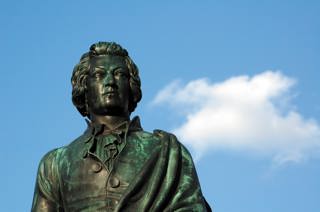
Mozart Requiem
This show is a bit different today. Last year I did a live video podcast on Mozart's Requiem for my Patreon subscribers. I've now edited that show into an audio-only version for everyone to be able to listen to, since this is such an essential piece and there's so much to talk about with it! The audio only version won't get into as much granular detail as the video podcast did, and it won't include quite as many clips from the movie Amadeus, but all the same, we take a deep dive into Mozart's Requiem today, talking all about one of the greatest unfinished works in the history of art. We'll discuss the myths and legends behind the piece, the movements that Mozart started but never finished, and the completions of the score by different composers, especially the heavily criticized but still regularly used completion of Franz Sussmayr. We'll also talk about each movement in detail, exploring just what Mozart brought to the Requiem text. This piece has the distinction of being one of the greatest pieces ever written, just as it is, but also one of the great what-if stories in musical history. Join us to learn all about the Mozart Requiem, and if you want to see the full video version of the show, please head over to patreon.com/stickynotespodcast to find out how you can support the show.
18 Juli 20241h 6min
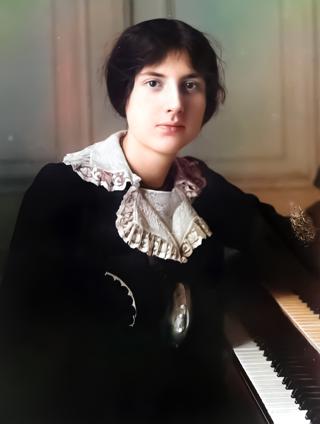
The Life and Music of Lili Boulanger
The history of classical music is littered with the stories of great composers who tragically died young. The composer I've been talking about for the last two episodes, Franz Schubert, died at 31. Mozart died at 36, Mendelssohn at 38, Bizet at 37, Gershwin at 38, Gideon Klein at 25, Purcell at 36. The composer I will tell you about today is part of this sad list. Lili Boulanger, one of the most talented and promising composers of her era, died at the age of just 24, and her entire life since the age of 2 was marked by illness and poor health. In her short life she wrote around 24 works, many of which show extraordinary prowess for such a young composer. Boulanger was the first woman to win the famous Prix de Rome, a French composition prize won by past luminairies such as Berlioz, Gounod, Debussy, Faure, Massenet, and many other greats of French composition. It was also won by Boulanger's father, a story we'll get to as we go through Boulanger's life. Her music was marked by the influences of impressionism, but also by the influence of her perhaps more well known sister, Nadia, who became a legendary composition teacher throughout the 20th century. Today I'll take you through some of the key moments in Boulanger's life, and we'll also take a look at 3 of her pieces: Les Sirenes, Faust Et Helene, the piece that won Boulanger the Prix de Rome, written when she was just 18, and we'll finish with an orchestral piece that might be the most frequent way you might encounter Boulanger's music in the concert hall these days entiled D'un Matin de Printemps. Boulanger, despite her short life, is one of hte most fascinating and underrated musical figures in classical music history, so if you aren't already familiar with her music, I can't wait to introduce you to her this week. Join us! A big thank you to Thomas Goss for his research on Lili Boulanger - his fantastic article on her is available here: https://orchestrationonline.com/lili-boulanger-in-her-own-right/ Performances: Les Sirenes: Chorus: Philharmonia Chor Stuttgart with Helene Schneiderman, mezzo-soprano and Émile Naoumoff, piano Faust Et Helene: Ann Murray (mezzo-soprano), Bonaventura Bottone (tenor), Jason Howard (baritone), BBC Philharmonic, Yan Pascal Tortelier, Conductor D'un Matin de Printemps: BBC Philharmonic, Yan Pascal Tortelier, Conductor
4 Juli 202447min
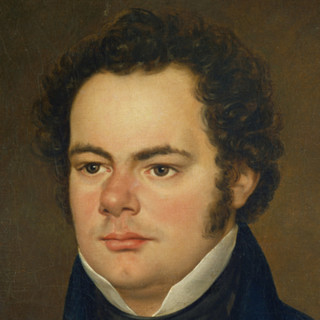
Schubert Sonata in B Flat, D. 960 (Part 2)
There are a few tropes when it comes to Schubert's late music. The pieces are very long. They have four movements. The first two movemnts are expansive, magisterial explorations of the human psyche, and the last two movements are much lighter, almost like two different pieces are at play. All of these tropes fit the Schubert B Flat Sonata we started talking about a couple of weeks ago. After the huge first movement, Schubert takes us into a world of the most remarkably simple and yet profoundly moving music in the second movement, followed by a scherzo and last movement that seem(and I emphasize the word seem) to wash all of that away. The last two movements of this sonata in particular have come in for criticism in some quarters, but this is nothing new for Schubert. You hear this criticism about his G Major Quartet, his cello quintet, and other large scale works. It's also been theorized that the final two movement "curse" Schubert seemed to struggle with is why he left his 8th symphony unfinished. But as you'll hear today, I don't think there's much, if anything, to criticize in these final two movements, and I'll try to argue that there's no drop off in quality in this music, just a different approach and outlook. But the bulk of today's show will be about this second movement. There is something beyond otherworldy in this character of Schubert's music. It doesn't belong to our world, but it doesn't belong to another world either. Instead it goes somewhere even deeper than we can possibly imagine. Schubert goes to a different place than any other composer when he is in this "mood," and in this movement, that bleak character is married to profound consolation, creating a movement of utter perfection. So let's explore the final three movements of this remarkable Sonata together. Join us!
20 Juni 202454min
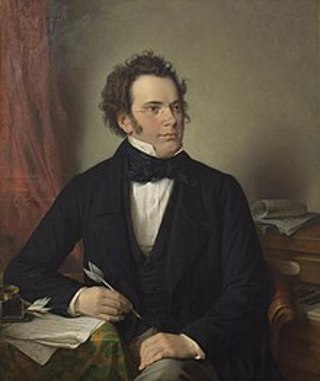
Schubert Sonata in B Flat, D. 960 (Part 1)
For a long time I've received emails and messages from people asking, and sometimes demanding, that I explore the solo piano repertoire. Other than a look at the Goldberg Variations of Bach, I've basically neglected a huge amount music, including some of the greatest works ever written. Why have I been doing this? Well, if I'm totally honest, it's been slightly out of a sense of intimidation. I'm not a pianist, and I've always been somewhat in awe of the piano and pianists. Even after spending years with this music, I still felt that I just simply didn't know the solo piano repertoire well enough to do it justice. Well, now that I've gone through ALMOST all of the symphonic standard repertoire, and now that I've started exploring the string quartet repertoire, I think it's time to throw off this sense of awe and dive right in. You might think I might not reach too high to start off, maybe an early Beethoven sonata, or a Mozart or Haydn Sonata. Well, in my opinion you've got to go big or go home, so I've decided to explore one of the towering masterpieces not only of the solo piano genre, but of all music, Schubert's Sonata in B Flat Major. This is a piece that has been described as "well-nigh perfect," as "beyond analysis," as including "the most extraordinary trill in the history of music," and as "the climax and apotheosis of Schubert's instrumental lyricism and his simplicity of form." These are just a few of the superlatives I've found in researching this piece. It was written in the last weeks of Schubert's short life, and it truly does take the listener on an unforgettable journey. There is nothing quite like Schubert's final works, and so over the next two episodes, I will take you through this remarkable sonata, a piece that Alex Ross has described as "a premature communication from the beyond." This is a huge piece, with so much to talk about, so I've split this episode into two parts. This week we'll look at the first movement, and then in two weeks we'll cover the final three movements. Join us!
6 Juni 202440min
